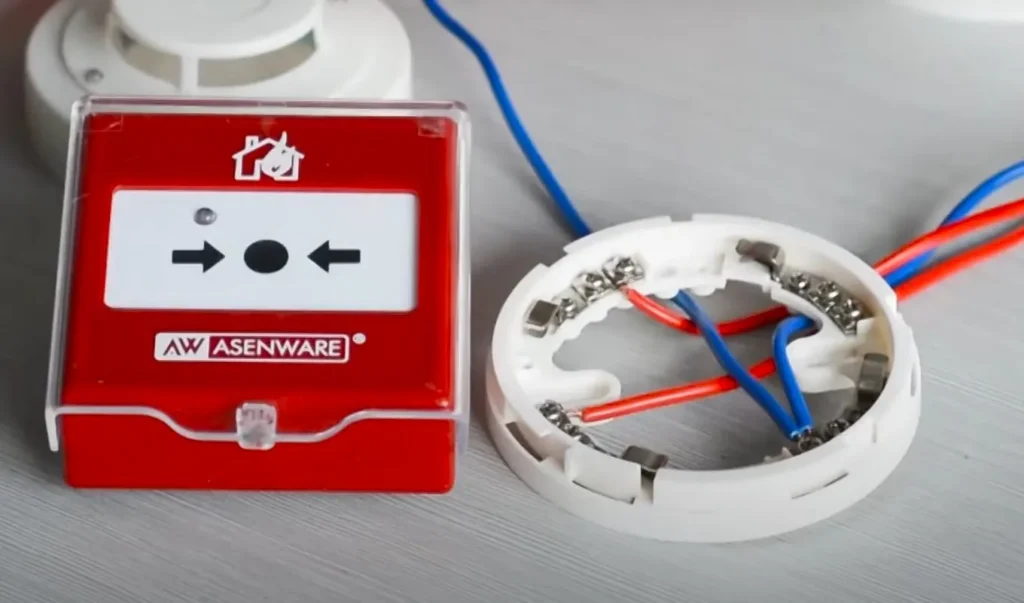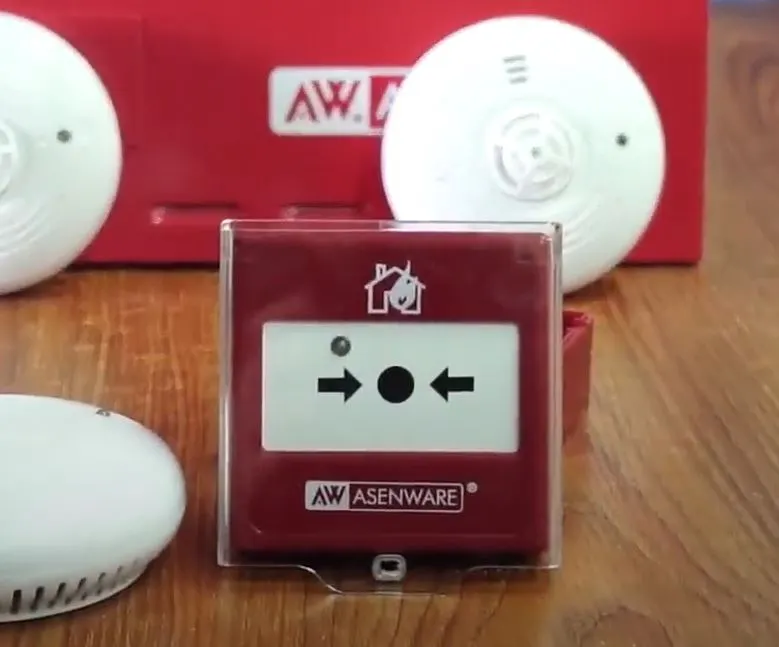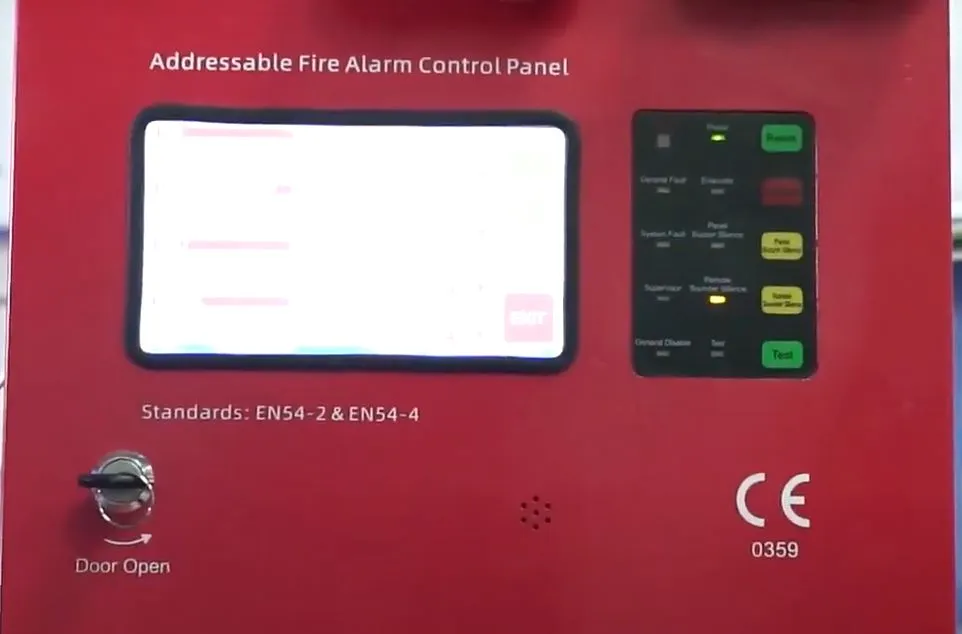You should think about whether a wired or wireless fire alarm system is best for your needs when selecting one for your place of business. There are benefits and drawbacks to every option.
Wired fire alarm systems

Since wires can be concealed inside finished walls and ceilings, wired alarm systems are an excellent option for new construction. However, because wires are difficult to conceal and can harm historic buildings, wired alarm systems might not be the best choice. The following are some benefits of wired fire alarm systems:
Less expensive
Compared to wireless alarm systems, wired alarm systems typically use less expensive devices.
There is no signal interference
Unlike wireless alarms, which are concerned with signal interference, wired alarms do not receive signals at radio frequencies.
More typical
Since wired systems are more prevalent than wireless ones, finding replacement parts may be simpler and less expensive.
No need for batteries
Wired alarm systems are more dependable than wireless alarm systems since they don’t require battery replacement because they are powered by a main power source.
Wireless fire alarms systems

Fast and affordable installation
During the installation process, you can save money, time, and minimize disruption to your business. Installing wireless systems takes less work because they don’t need wiring.
Greater flexibility
Wireless fire alarm systems are easily movable and can be mounted on walls composed of any material. A wireless alarm system’s adaptability makes it simpler to expand, upgrade, and maintain.
Better aesthetics
Wireless systems don’t require cables or wires, which can detract from the design of your building. Applications that care about appearances might therefore want to go with a wireless system.
What is the best alarm system for you?
Are you having trouble deciding which kind of fire alarm system to put in your building? For greater dependability and less expensive parts, a wired system might be something to think about when constructing a new facility. On the other hand, you might go with a wireless alarm system if you need one for an existing building and are worried about flexibility and aesthetics.

Fire alarm systems have evolved from wired to wireless models
Over the years, fire alarm systems have experienced numerous modifications. Fire alarm systems have evolved from “birdhouse” alarms, which were directly connected to the fire station, to wireless alarms that use radio or IP communication to pinpoint the precise location of the device. Both systems are still in use today, each for a different purpose. While systems of all kinds are starting to change very quickly, addressable and wired alarm systems will be the main topics of discussion here.
There are two varieties of wired fire alarms
Conventional systems call for the division of a structure or building into zones
In a traditional system, the control panel typically displays a standard description when a device goes into alarm. In addressable systems, devices are addressed to give a precise location description of the detector that sets off the alarm. A central station can receive a monitoring object from certain addressable systems. In this situation, emergency services can be notified of the location of the alarming device.
Addressable system technology combined with wireless fire alarm systems
Call station transmitters and smoke detectors are products of the first technology. To send data from the devices to the main control panel, a receiver/transmitter is installed. The device will communicate directly with the primary fire alarm control panel if it is close enough to the control panel. Each device can now receive and transmit thanks to the second technology, which also offers a backup route back to the control panel. In order to receive data from the wireless devices, a router is hardwired to the control panel and installed. Wireless devices are installed and run on batteries in both scenarios.
Throw away the old
Although the old systems was directly linked to the fire department, the new systems can send messages via radio, IP, or “Plain Old Telephone Service” (POTS). POTS lines, or wire lines put in place by telecom companies in homes or offices, are starting to be replaced by Internet Protocol (IP) or radio (cellular) communications by a large number of end users. Hard lines are gradually going out of style as cellular technology advances and gains traction. Because so many homes and businesses now have a network connected to a router, IP communicators are becoming even more popular.
Over time, emergency fire alarm communications have undergone significant changes and will continue to change. Telephone lines have been replaced by wireless cellular communicators, and conventional panels have developed into alarm networks. Fire alarm and monitoring systems will continue to become more user-friendly as a result of new developments and technologies.
Additional advancements in the field of life safety and fire
Innovations in life safety have increased significantly over the past ten years. Well-known notification system producers are currently developing a range of wireless products. These manufacturers want to push the envelope in order to improve productivity, efficiency, and environmental safety. A few of the innovations listed below have already started to alter the industry:
Flexible sprinkler heads that are pre-assembled
In water-based systems, innovations like pre-assembled flexible sprinkler heads are starting to show up. Because of the improved efficiency, less time is needed for design, installation, and maintenance. It will take very little work to bend existing flexible heads in the event that a tenant moves or the building’s layout changes.
Wireless alarm clocks
Systems for signaling and detection based on technology are getting easier to use. Now that they can be adjusted, they can fit into any kind of building. The number of alarm systems has increased due to new wireless technologies that eliminate the need for drilling holes and running wires, speed up installation, and minimize disruptions to facilities. Alarm systems had to run conduits before they switched to wireless, which could have destroyed walls or other structures. This presented particular challenges for historic structures attempting to maintain their original architectural design. By using wireless systems, occupancy can be reached to code without endangering the building’s structural integrity.
Particular risks
Particular risks are growing to one of the greatest extents. These systems can put out fires with little to no water usage, so they are not just for securing these areas. There are numerous alternatives to using water to put out fires, and each has benefits and drawbacks of its own. Among these choices are hybrid systems, which blend safe water-based systems with a gas extinguisher.
Building a better future
The fire and life safety industry has been able to grow, having less of an impact on the environment, because of the life safety innovations previously mentioned. Customers will receive more convenient and effective services as a result.